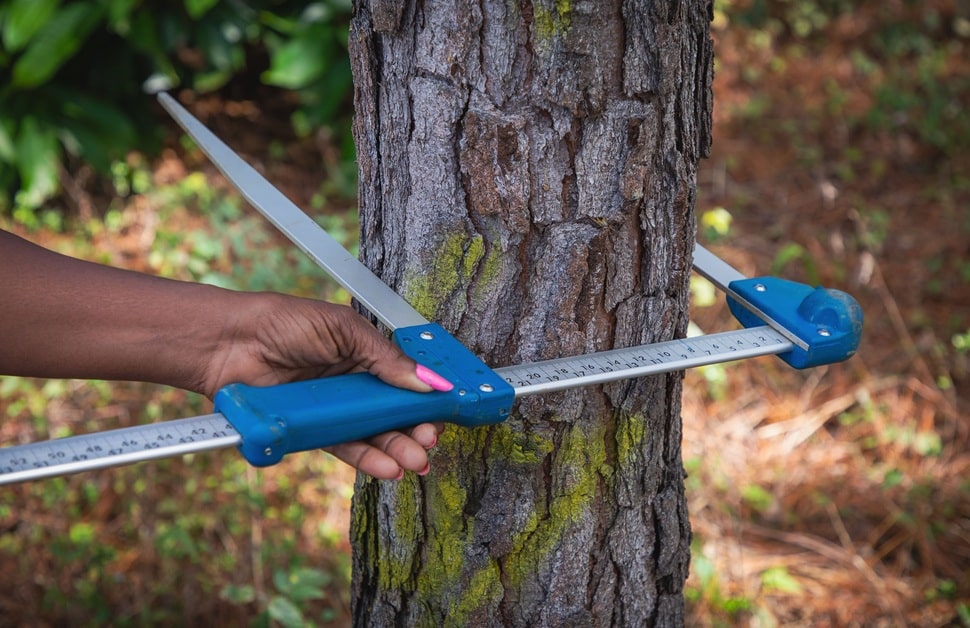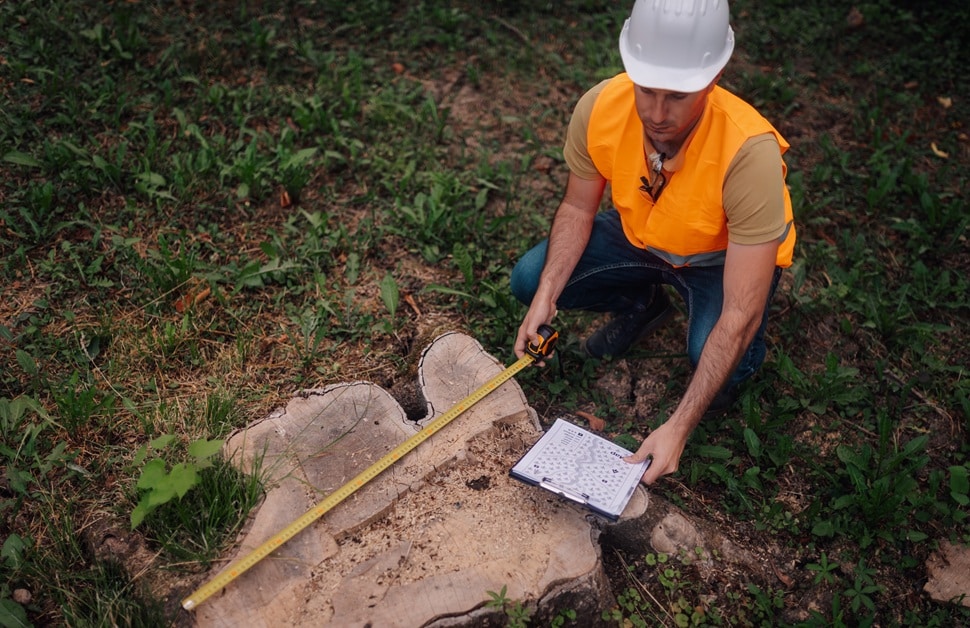
Arboricultural Method Statements
After your local planning authority has granted planning permission, the next challenge is making sure that your build can go ahead without damaging nearby trees.
Even with the best possible design, the reality of construction means that groundwork, heavy machinery and changes to site levels can put tree roots and branches at risk.
By following an arboricultural method statement (AMS), developers can follow a step-by-step plan for how construction will be managed to protect trees, satisfy the conditions of planning consent, and keep the project compliant.
What is an Arboricultural Method Statement?
An arboricultural method statement (AMS) is a technical document that translates the tree information from a past tree survey into clear instructions for contractors to work from.
More specifically, an AMS will explain where protective barriers and ground protection must be installed, how certain operations need to be carried out, and what measures are needed to safeguard trees throughout the build.
Link to an Arboricultural Impact Assessment (AIA)
Arboricultural method statements and arboricultural impact assessments are often seen as being closely related.
An AMS will usually come after an arboricultural impact assessment (AIA), so if you need both of them to secure planning consent, you will need an AIA first.
When is an Arboricultural Method Statement Required?
Especially on development sites with protected or high-value trees, an AMS will be one of the local authority’s conditions of planning consent.
Local authorities will usually insist on an arboricultural method statement in the gap between planning approval and development works.
At any point that a development scheme is in a sensitive area, near veteran trees or subject to relevant planning conditions, a statement will be needed for the planning project to move forward.
AMS Methodology
Contents of an Arboricultural Method Statement
A detailed AMS will typically include:
- Tree Protection Plan (TPP) – showing barrier fencing, ground protection and exclusion zones
- Details of Pre-Construction Works – explaining the recommendations from the tree survey
- Instructions for Construction Operations Within Root Protection Areas – offering alternative solutions such as no-dig methods or trenchless services
- Measures for Site Management – covering contractor access, material storage and restricted working areas
- Arrangements for Monitoring and Supervision – specifying who, when and how compliance is tracked
Arboricultural Method Statement Process
In the process of creating an AMS, an arboricultural consultant will follow these steps:
- Review of the Approved AIA and Tree Review
- Preparation of a Detailed Tree Protection Plan with Fencing and Access Arrangements
- Agreement of Methods with the Project Team Before Starting Work
- Installation of Barriers and Ground Protection
- Supervision of Operations Close to Trees
- Ongoing Site Inspection and Reporting to the Client and Local Planning Authority
- Removal or Protection After Elimination of Risks to Trees

Support with Arboricultural Method Statements
Arboricultural Method Statement Consultants
In past years, our arboricultural specialists have delivered AMS documents for planning projects of all shapes and sizes all over the country.
Our team understands what local planning officers expect, as well as the frustrations of developers with restrictions and obstacles.
With that in mind, we make sure that your contractors have clear instructions that ensure trees are protected without holding up the progress of your development plans.
Arboricultural Method Statement Cost
All of the tree survey services we provide are priced up based on the circumstances of the development site, especially in terms of the number of trees. With creating an arboricultural method statement, the situation is no different, starting at a baseline cost of £299.
Smaller residential projects are generally more straightforward, but larger or more sensitive schemes could need multiple visits or a level of detailed supervision.
One thing we always do is make our pricing fair, so if you want to know the cost of an AMS on your site, simply get in touch with Arbtech directly, and our team can work it out for you.
Arboricultural Method Statement Near Me
Over more than a decade, our team has worked with countless architects, contractors, developers and more across the length and breadth of the UK.
Whether your development site sits in an urban centre or a rural setting, the tree consultants at Arbtech are just as capable of catering to your needs.
For an arboricultural method statement that meets planning requirements and pushes your project into the next stage, speak to our team over the phone, email or our website, and we will pass on a free quote for you to look over.


